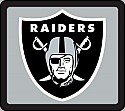Just a cut a paste from a interesting Yahoo News Article. The link is posted at the bottom.
When the waves from Hurricane Ike receded, they left behind a mystery — a ragged shipwreck that archeologists say could be a two-masted Civil War schooner that ran aground in 1862 or another ship from some 70 years later. The wreck, about six miles from Fort Morgan, had already been partially uncovered when Hurricane Camille cleared away sand in 1969.
Researchers at the time identified it as the Monticello, a battleship that partially burned when it crashed trying to get past the U.S. Navy and into Mobile Bay during the Civil War.
After examining photos of the wreck post-Ike, Museum of Mobile marine archaeologist Shea McLean agreed it is likely the Monticello, which ran aground in 1862 after sailing from Havana, according to Navy records.
"Based on what we know of ships lost in that area and what I've seen, the Monticello is by far the most likely candidate," McLean said. "You can never be 100 percent certain unless you find the bell with 'Monticello' on it, but this definitely fits."
Other clues indicate it could be an early 20th century schooner that ran aground on the Alabama coast in 1933.
The wrecked ship is 136.9 feet long and 25 feet wide, according to Mike Bailey, site curator at Fort Morgan, who examined it this week. The Monticello was listed in shipping records as 136 feet long, McLean told the Press-Register of Mobile.
But Bailey said a 2000 report by the U.S. Army Corps of Engineers determined the remains were the schooner Rachel, built at Moss Point, Miss., in 1919 and wrecked near Fort Morgan in 1933.
He said the wreckage appears to have components, such as steel cables, that would point to the Rachel rather than an 1860s schooner.
Glenn Forest, another archaeologist who examined the wreck, said a full identification would require an excavation.
"It's a valuable artifact," he said. "They need to get this thing inside before it falls apart or another storm comes along and sends it through those houses there like a bowling ball."
Meanwhile, curious beach-goers have been drawn to the remains of the wooden hull filled with rusted iron fittings. Fort Morgan was used by Confederate soldiers as Union forces attacked in 1864 during the Battle of Mobile Bay.
"It's interesting, I can tell you that," said Terri Williams. "I've lived down here most of my life and I've never seen anything like this, and it's been right here."
Source: http://news.yahoo.com/s/ap/ike_mystery_ship&printer=1;_ylt=AmyetLM8Qi53YZNrCRdOHCpH2ocA
Saturday, September 20, 2008
Sunday, September 7, 2008
Another Civil War vet murdered

On September 6, 1901 our 25th President and Civil War Vet was murdered in Buffalo, New York. The William McKinley assassination took place on September 6, 1901, at the Temple of Music, in Buffalo, New York. President William McKinley, attending the Pan-American Exposition in Buffalo, was shot twice by Leon Czolgosz, an anarchist. McKinley initially appeared to be recovering from his wounds, but took a turn for the worse six days after the shooting and died on September 14, 1901. Theodore Roosevelt succeeded McKinley as President. McKinley was the third of four American presidents to be assassinated, following Abraham Lincoln in 1865 and James Garfield in 1881 and preceding John F. Kennedy in 1963. After McKinley's murder Congress would officially charge the United States Secret Service with the physical protection of American presidents.
Presonally, I grew up near Buffalo, New York in a small town called Youngstown. Yesterday was the 107th Anniversary of the McKinley assassination.
Subscribe to:
Posts (Atom)



